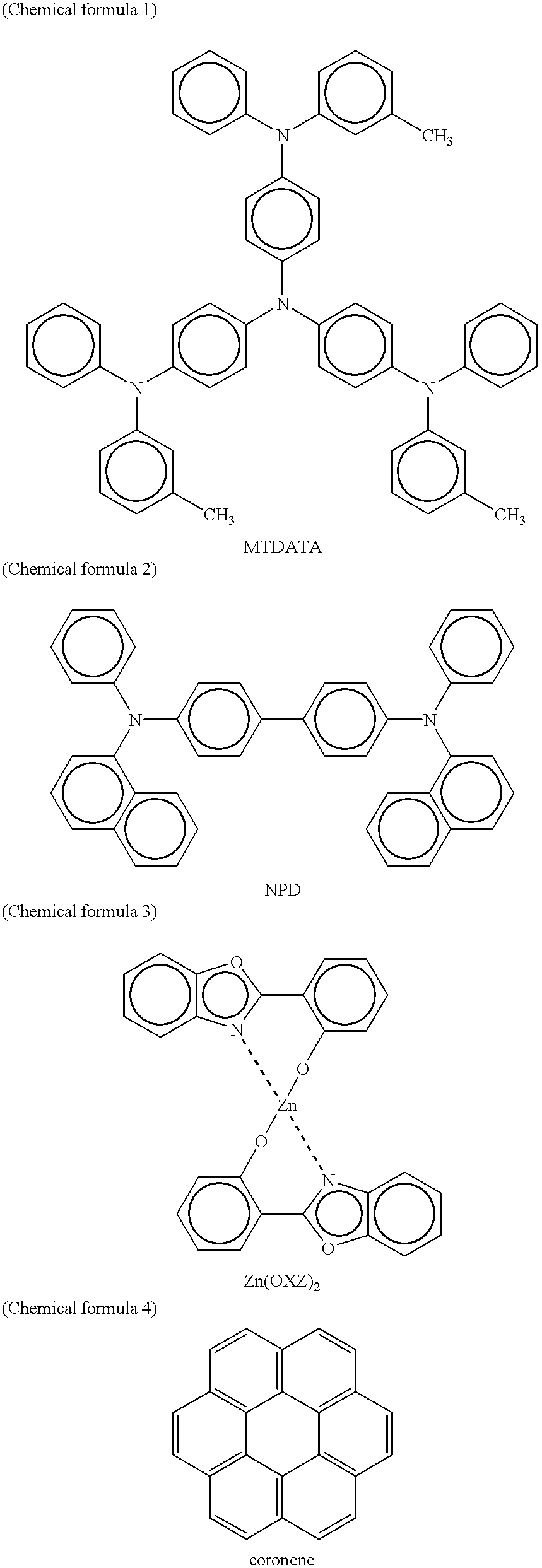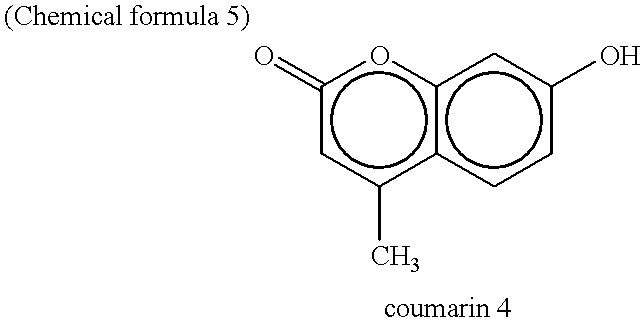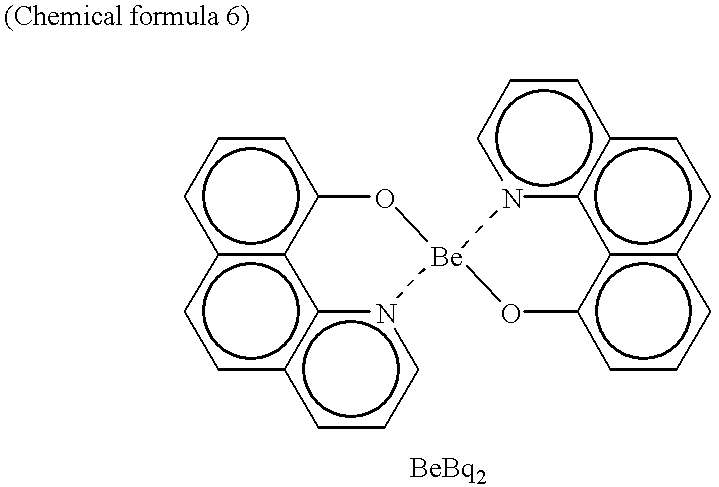Organic electroluminescence element
a technology of electroluminescence element and organic material, which is applied in the direction of discharge tube luminescnet screen, natural mineral layered products, transportation and packaging, etc., can solve the problems of insufficient heat resistance of organic materials, inability to obtain uniform and sufficient luminance for a long time, etc., and achieve stable luminance and high luminance
- Summary
- Abstract
- Description
- Claims
- Application Information
AI Technical Summary
Benefits of technology
Problems solved by technology
Method used
Image
Examples
examples 2 to 7
and
Comparative Examples 3 and 4
Also in organic electroluminescent devices in examples 2 to 7 and comparative examples 3 and 4, only the emitting layer 4 in the organic electroluminescent device in the above-mentioned example 1 was changed, and bis(10-hydroxybenzo[h]-quinolinate)beryllium (hereinafter referred to as BeBq.sub.2) indicated by the following chemical formula 6 was used as a host material. ##STR3##
The organic electroluminescent devices in the examples 2 to 7 and the comparative examples 3 and 4 were obtained in the same manner that in the example 1 except that an emitting layer 4 was formed using only the above-mentioned host material in the comparative example 3, while 2',3'-naphtha-2,3-fluorenone indicated by the following chemical formula 7, 2,3-anthrafluorene indicated by the following chemical formula 8, 2,3-benzofluorenone indicated by the following chemical formula 9, picene indicated by the following chemical formula 10, ovalene indicated by the following chemical...
examples 8 to 19
and
Comparative Examples 5 and 6
Also in organic electroluminescent devices in examples 8 to 19 and comparative examples 5 and 6, only the emitting layer 4 in the organic electroluminescent device in the above-mentioned example 1 was changed, and 1AZM-Hex indicated by the following chemical formula 14 was used as a host material. ##STR5##
The organic electroluminescent devices in the examples 8 to 19 and the comparative examples 5 and 6 were obtained in the same manner that in the example 1 except that an emitting layer 4 was formed using only the above-mentioned host material in the comparative example 5, while 1',2'-naphtha-2,3,-fluorene indicated by the following chemical formula 15, 2',1'-naphtha-1,2-fluorene indicated by the following chemical formula 16, 1,12-benzperylene indicated by the following chemical formula 17, 4,5-benzpyrene indicated by the following chemical formula 18, benzo(a)pyrene indicated by the following chemical 19, naphthapyrene indicated by the following chem...
example 20 to 31
and
Comparative Examples 7 and 8
Also in organic electroluminescent devices in examples 20 to 31 and comparative examples 7 and 8, only the emitting layer 4 in the organic electroluminescent device in the above-mentioned example 1 was changed, and tris(8-quinolinol)aluminum (hereinafter referred to as Alq.sub.3) indicated by the following chemical formula 28 was used as a host material. ##STR8##
The organic electroluminescent devices in the examples 20 to 31 and the comparative examples 7 and 8 were obtained in the same manner that in the example 1 except that an emitting layer 4 was formed using only the above-mentioned host material in the comparative example 7, while 1',2'-naphtha-2,3-fluorenone indicated by the following chemical formula 29, 2',1'-naphtha-1,2-fluorenone indicated by the following chemical formula 30, rubicene indicated by the following chemical formula 31, 1,2-benzpentacene indicated by the following chemical formula 32, 5,6,11,12-tetraphenyl naphthacene (rubrene) ...
PUM
| Property | Measurement | Unit |
|---|---|---|
| Energy | aaaaa | aaaaa |
| Energy | aaaaa | aaaaa |
| Energy | aaaaa | aaaaa |
Abstract
Description
Claims
Application Information
 Login to View More
Login to View More - R&D
- Intellectual Property
- Life Sciences
- Materials
- Tech Scout
- Unparalleled Data Quality
- Higher Quality Content
- 60% Fewer Hallucinations
Browse by: Latest US Patents, China's latest patents, Technical Efficacy Thesaurus, Application Domain, Technology Topic, Popular Technical Reports.
© 2025 PatSnap. All rights reserved.Legal|Privacy policy|Modern Slavery Act Transparency Statement|Sitemap|About US| Contact US: help@patsnap.com



